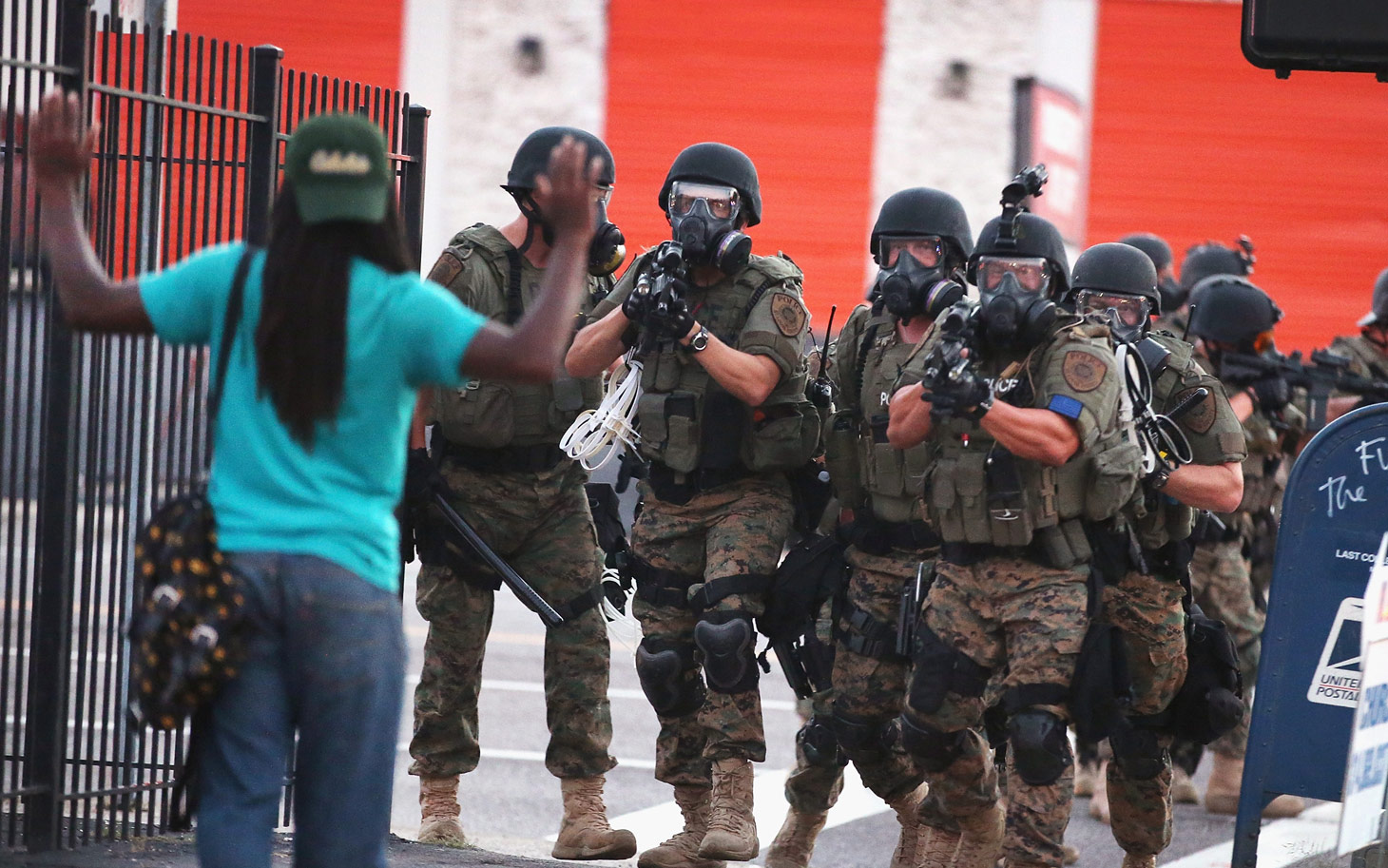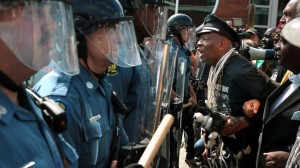
On August 9 an unarmed young, black male was shot at least six times – twice in the head – by a white police officer. For hours, the body was left in the street, uncovered and uncared for. The days following the shooting were marked with an explosion of moral outrage and public anguish. Widespread suspension of dissent and democratic rights through criminal sanctions would ensue. The police’s paramilitary mindset and tactics combined with the slow, selective, and confusing release of information surrounding the events leading up to and after the shooting only served to enflame the situation.
Today, for the most part, the public protesting has stopped. The images of tear gas, riot gear, and the reports of use of rubber bullets, suppression of information, and the arresting of civilians and journalists is, somewhat, a distant memory. America’s public dialogue surrounding the events in Ferguson, Missouri continues however. Allegations of a history of racial profiling and discussions around the culture of policing, the use of force, and the implications on equality have emerged. On one hand is the debate on whether the militarization of the police was an appropriate response to contain civil unrest. Others focus on the issue of economics, namely, that the protest was borne out of anger over the racial disparities in income. And still, there are those in the middle, who claim that there is “no racial divide” in Ferguson at all. In any case, it is almost understood that the death of Michael Brown, at the very least, required a real conversation about the state of race relations in the United States.
To the Canadian public, in general, the discourse in Ferguson is a reminder that we continue to be worlds apart from our American counterparts. Their statistics are troubling: a black individual is shot and killed by a police officer every two weeks in the United States. For many, what occurred in Ferguson, and in many other places in the United States, is simply not happening in Canada. As Toronto lawyer David Butt noted in the Globe and Mail, “the sad events in the St. Louis suburb give us the opportunity to ponder how we do things differently and to realize how comparatively well things work here.” It might be comforting to think that the shooting of Brown, and the protest that followed, are distinctly American phenomena. The history of racial tension, trigger happy police officers, and the disproportionate criminalization of racialized people have long plagued the United States.
But wait a second…
The Toronto police shootings of Michael Wade Lawson, Lester Donaldson, Sophia Cook, Raymond Lawrence, Jeffrey Reodica, and Always Al Nadhir (to name a few) illustrate that the shooting of Brown is neither an anomaly nor solely an American lived experience.
As author Steve Mertl notes, the situation in Ferguson, like other clashes, is rooted in racial and cultural divisions in society that Canada has not been immune from.[1] It may be what Constance Backhouse calls “historical amnesia” or our views on multiculturalism that allowed the chaos that surrounded Brown’s death to give many Canadians a “temporary diversion” from our own events.[2] Whatever the reason, the images that emerged out of Ferguson of police officers in full riot gear against protestors looked similar to the photos from the G20 summit in Toronto in 2010.[3] The historical complaints of racial profiling by Ferguson police mirror those of racialized communities in Toronto. The fatal shooting of Brown in some ways echoes the killing of Sammy Yatim who was shot repeatedly on empty Toronto streetcar.[4]

The dumping of Indigenous people by Saskatoon police officers outskirts of the city left to freeze to death is another reminder of the conditions that exist which make it possible for such senseless acts of police violence. Author Tomas Borsa’s “While Ferguson Morns” illustrates that it was only ten days after Brown’s death that the body of Tina Fontaine was pulled from the Red River just outside of Winnipeg. The strained relationship between Indigengous people and Canada’s police forces is only reinforced by the view that the police have been disinterested in thoroughly investigating missing and murdered Aboriginal women. When these types of police abuses are committed through a lens of racism they are shrouded in darkness only to be discounted and ignored.
It might be cliché in a wake of a major racial eruption to say that the public needs to have a national conversation on race. What is happening from the Trayvon Martins to the Eric Garners strengthens the need to have this difficult discussion on the social and human cost of racial profiling. Brown’s shooting is a microcosm of where we are as a society. The events highlighted a real problem. It is a problem that not only affects basic human rights, but a national failure to recognize police violence against racialized people as a larger cultural phenomenon that views black and brown bodies as criminalized. As the public, we need to challenge our understanding of the problems that have helped create the environment that guides a police officer to shoot an unarmed teen six times.
